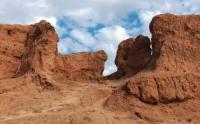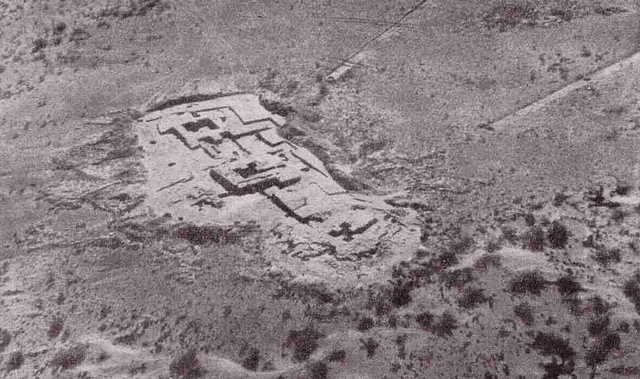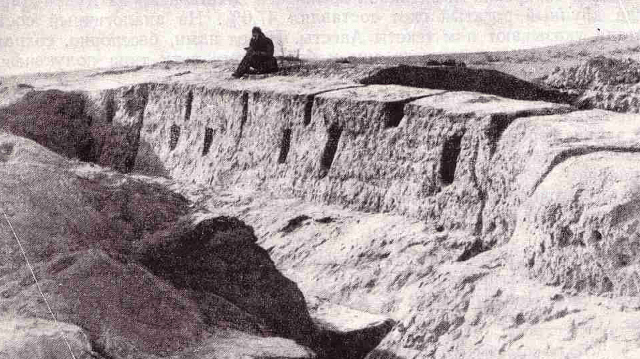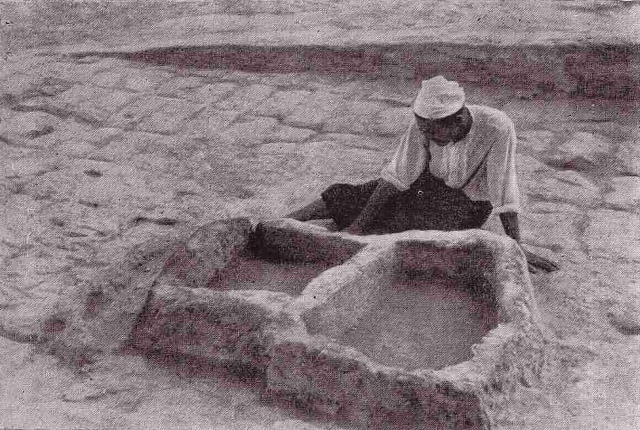You are here
Ancient settlement Kyuzeli gyr.

Archaeological monuments of Dashoguz Region.
When our meeting with the qadi took place, he told me:“ There is a very large crowd in this city, and you will not be able to enter it during the day; Nur al-Islam will come to you, and you will enter with him at the end of the night. " We did so and stopped at a new madrasah, which was empty. After the morning prayer, the aforementioned qadi came to us, and with him a group of noble people of the city, among whom were Mawlana Humam ad-Din, Mawlana Zayn ad-Din al-Mukaddasi, Mawlana Rida ad-Din Yahya, Mawlana Fadlallah ar-Ridawi, Mawlana Jalal ad-Din al-Imadi and Mawlana Shams ad-Din al-Sinjari - imam of the Khorezm emir. All of them are worthy and respectable people. In their faith, the teaching of the Mu'tazilis prevails, but they do not show this, because the Sultan Uzbek and Kutludumur, his emir in this city, are Sunnis."
Ibn Battuta. "Travels in Central Asia".
Tours on archaeological monuments of Kunya-Urgench.
The ancient settlement of Kyuzeli gyr (Handum kala) is located in the area of the ancient delta of the Amu Darya, on the eponymous outlier hill 76.9 meters above sea level, located in the northeastern part of the Karakum desert, 16.9 kilometers to the west and slightly north of the Akdepe village, 28.2 kilometers south and slightly east of the city of Kynya-Urgench, 46.4 kilometers south-east of the village named after Saparmurat Turkmenbashi on the territory of the Akdepa etrap, Dashoguz velayat.
Kyuzeli gyr (Kyuzelikir), an ancient Khorezm settlement, discovered in 1939, excavated in 1950, 1953 - 1954. Kyzeli gyr - ruins of a fortress of the 6th-5th centuries BC e., the largest monument of early ancient Khorezm.
The fortress was surrounded by a wall with a flat-roofed shooting gallery and semicircular towers. In the center of the settlement there was a complex of public buildings. The settlements of the Achaemenid time are characterized by their enormous size, completely occupying the area of the hill.
The ancient settlement of Kyuzeli gyr has a sub-triangular shape - in accordance with the outline of the hill. The settlement covers an area of over 25 hectares, which was originally occupied only by the most elevated southwestern part of the hill. Later, almost 13 hectares were covered by the fortress wall from the north and east of the early settlement.
The length of the settlement is about 1 kilometer. The settlement was surrounded by two parallel walls, between which a corridor about 2.5 meters wide stretched. The walls, made of pakhsa and adobe bricks, reached a thickness of 1 - 1.5 meters.
On the outer defensive wall, at intervals of 2 meters, there were numerous narrow loopholes, and every 35 meters there were oval or rectangular towers. Three gates have been installed. The main place in the upper fortress was occupied by a somewhat chaotic architectural complex, which researchers consider to be a palace that retained the features of the economic and cult center of the local tribal association.
The ceramic ware of Kyuzeligyr was made with the help of a hand and foot potter's wheel; metal processing reached a high level of development. Arrowheads, details of a horse harness, women's jewelry, etc. were cast from bronze.
The inhabitants were engaged in agriculture, but their main activity was still distant pasture and livestock raising. Found pottery, made on a potter's wheel, bronze arrowheads of the Scythian type, tools and ornaments.
The huge inner area of the settlement is almost completely free of cultural remains, from which it follows that it was not used for housing. The most probable assumption is that this area was used as a corral for cattle - the most important one, in need of protection of the wealth of the Khorezmians.
All life was concentrated within an array of powerful walls of the settlement, containing 2 or 3 rows of parallel narrow corridor-like living quarters that encircled the entire settlement in a circle. In addition to the houses of the Amirabad type, there are other buildings on the settlements that have a special, non-residential purpose.
The defensive system of the settlement is quite perfect; the walls are protected from the outside by numerous towers. The archaeological materials of Kyuzeli gyra, along with the complexes of Sogd, Margiana and Southern Bactria, undoubtedly represent variants of one cultural layer, one large ethnocultural region.
Geographic coordinates of the Kyzeli gyr settlement: N42 ° 04'19.74 "E59 ° 11'02.95"



Authority:
On materials of information department of the State committee of Turkmenistan on tourism and sport. "Religious and spiritual monuments to Central Asia". Author M. Hashimov. Saga publishing house, 2001.
Photos
Alexander Petrov.







